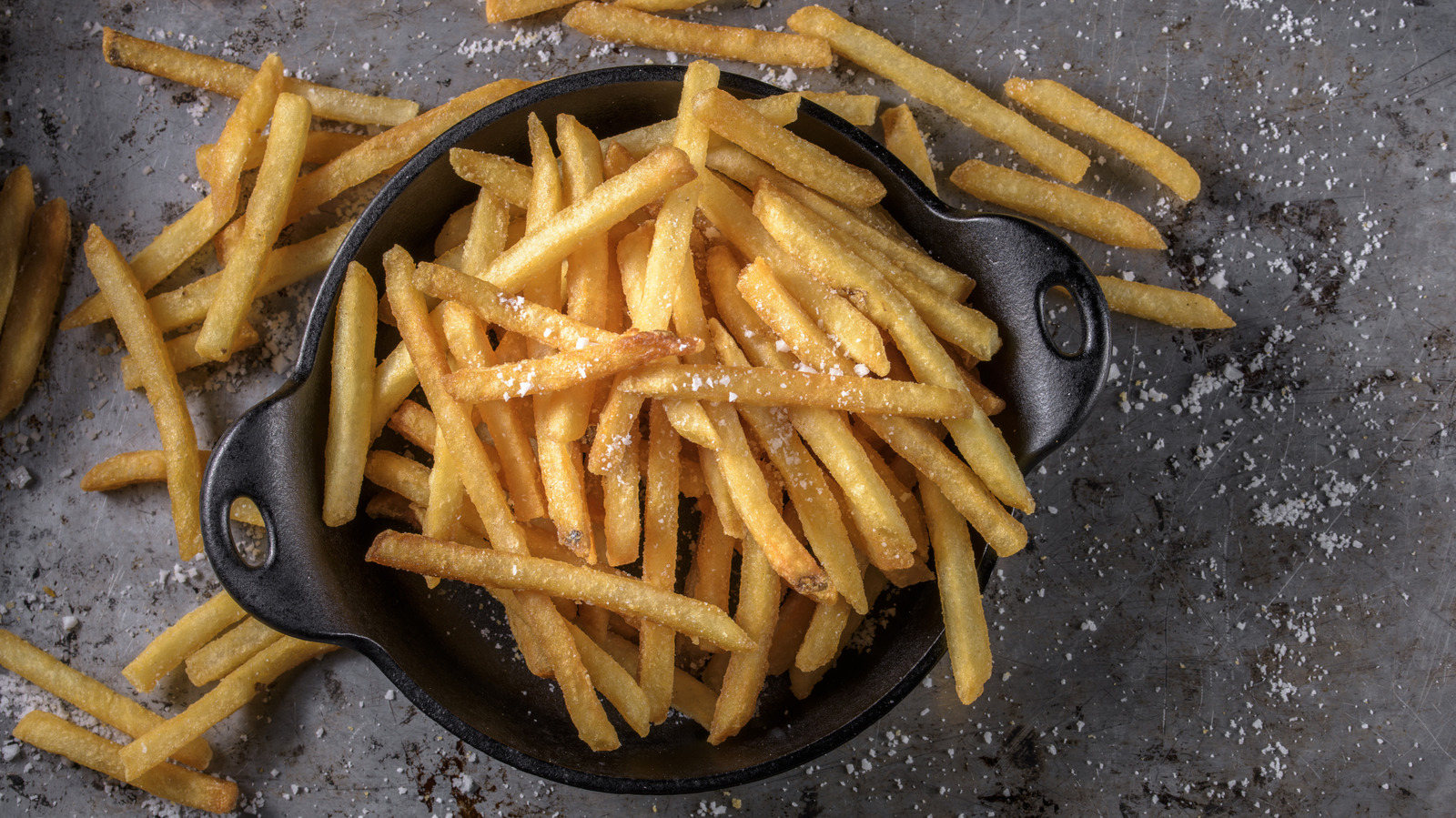There are little joys in life that don’t quite compare to anything else, and our beloved homemade French fries are one of them. One bite into a thin layer of golden crispiness, followed by a warm burst of steamy potato that’s never soggy, cold, or (sigh) unseasoned and we can hear cherubs singing. There are a lot of elements at play here, and the distribution of salt is a big one. Too much or too little and the angelic French fry loses its wings, falls limp, and crashes in a downward spiral towards Earth. Here’s the lesson: You have to know how to make the salt stick to the French fry, and it’s all about timing. According to the Idaho Potato Commission’s resident expert, Dr. Potato (just go with it), we should salt our potatoes when they’re still too hot to handle.
“I recommend not salting the fries ’til they come out of the fryer,” Dr. Potato urges, ” And even then, waiting for an order before salting, as the fries can turn limp prematurely if salted too soon.”
As those steamy and crisp fries emerge from the fryer, a thin layer of residual frying oil coats each fry’s surface. This helps the salt crystals adhere to the potato. Oh, but please don’t add salt to your frying oil. It breaks it down, rendering the ingredient useless. And while we’re on about oil, vegetable oil is great for frying with its neutral flavor and high smoke point.
For the perfectly salted fries, size does matter
The size of salt crystals vary, and that’s a good thing. It goes like this: Fine salt, kosher salt, coarse salt, pretty salt. Bigger salt grains like kosher salt are just the thing for seasoning meats, perfecting a salt crust, and controlling just how much salt is being sprinkled from your fingertips. That’s why chefs love it, too. Save the visually pleasing, flaky Maldon for something pretty that benefits from a little salt, like chocolate and cookies. When it comes to French fries (and popcorn), crushed kosher salt is just what we need. While the fine grains of table salt can work, kosher salt doesn’t usually contain additives like iodide, lending a more neutral flavor.
Grind your own kosher salt in a dedicated grinder with an adjustable setting, like this one from OXO Good Grips, or you can always opt for popcorn salt. It’s made with fine salt grains and often other seasonings. We like this mineral-packed micro sea salt from Amazon that comes in a convenient shaker, but if you want something with more zip, this two pack of barbecued flavored and salt and vinegar popcorn seasonings is fun. They’re plenty salty and include anti-caking ingredients to coat your fries evenly. Shake it all over those fries using the Mcnald’s method, another official Dr. Potato recommendation.
“McDonald’s, for years has had special salt shakers and illustrated diagrams on how to salt the fries after frying,” Dr. Potato says. “Basically, using a forward and back motion towards you rather than a side-to-side action.”





